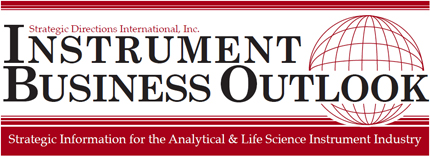ILSC 2015: Scattered Light

Michael Tice, Contributing Editor, Instrument Business Outlook - November 15, 2015
On November 3-4, Wyatt Technology hosted the 24th International Light Scattering Colloquium at the Four Seasons Resort The Biltmore in Santa Barbara, California. The event brought together dozens of scientists to discuss the use of light scattering in diverse applications from polymer science and nanoparticles to viruses and therapeutic proteins.
Erica Ollmann Saphire, PhD, of the Scripps Research Institute gave the first plenary lecture, describing her work on hemorrhagic fevers. Dr. Ollmann Saphire directs the Viral Hemorrhagic Fever Immunotherapeutic Consortium, which pools research from collaborators worldwide to develop therapies for these diseases. The talk traced how the Consortium produced the ZMapp drug for Ebola, which provided 100% protection in a study with primates, and saw limited experimental use on humans during the most recent epidemic. An important contribution of multiangle light scattering (MALS) was the discovery that one of the structural proteins of the virus had a dimeric form that had been overlooked in the previous decade of research on the protein. Composition gradient MALS also provided insight into the binding affinities of the many different antibodies the Consortium tested, with an eye toward optimizing which to use in the final antibody cocktail.

The NIST’s Vincent Hackley, PhD, described the need for new analytical methods for characterizing nanoparticles. The lack of these methods, and a fuller understanding of nanoparticles’ health and environmental risks, are retarding product development. Thus, there is great interest in developing these physicochemical methods. Asymmetric flow field-flow fractionation (A4F) offers many advantages for nanoparticle characterization, particularly when mated with multiple detector methods that can provide a wealth of orthogonal information. Dr. Hackley considers electron microscopy, AFM and electrospray differential mobility analysis to be of value as well. He also discussed the NIST’s development of reference materials with known properties. The agency provides reference materials for several of the most common nanoparticles used in commercially available products.
Brian Shoichet, PhD, of the University of California, San Francisco, discussed how light scattering can help streamline the drug discovery process. His research shows that the most common source of extraneous “hits” in high-throughput screening is the formation of aggregates that indiscriminately inhibit enzymatic activity. Because they are not truly targeting the enzyme of interest, developing these candidates is a wasted effort. Dr. Shoichet proposed that new assays for colloidal aggregation be instituted in drug discovery. Other speakers at the colloquium also commented on ways in which light scattering can act as an early indicator of the “developability” of a drug candidate.
Wyatt founder Philip Wyatt reviewed the history of light and light scattering physics. Other company representatives gave brief talks on products, such as the μDAWN MALS detector, designed for use with UHPLC. Another development was the impending release of a new version of ASTRA software, integrating instrument control of Agilent Technologies LCs. Other LC vendor partners are also being considered.
As published in Instrument Business Outlook: ILSC 2015: Scattered Light
